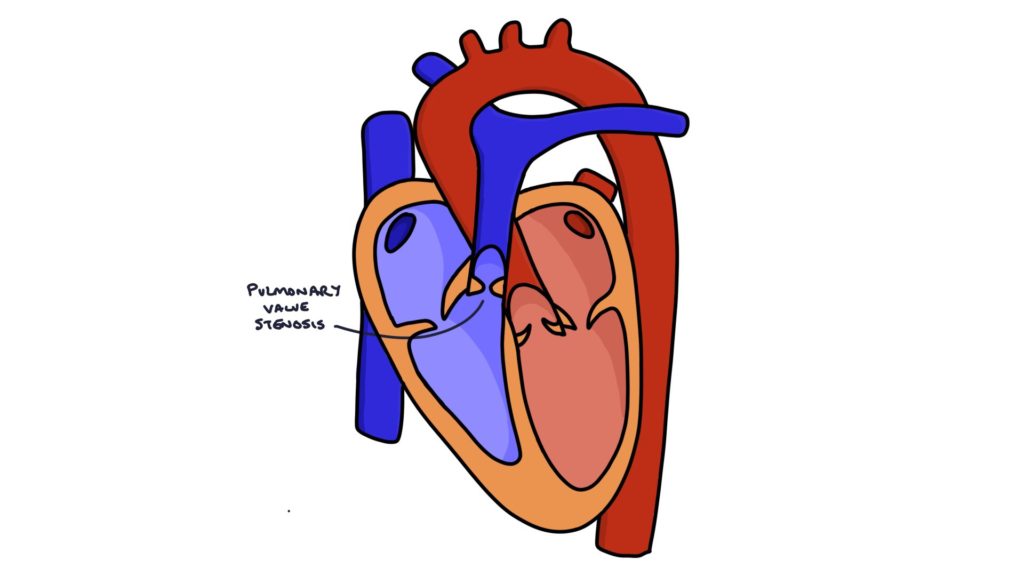The pulmonary valve usually consists of three leaflets that open and close to let blood out and prevent blood from returning to the heart. These leaflets can develop abnormally, becoming thickened or fused. This results in a narrow opening between the right ventricle and the pulmonary artery. This is called congenital pulmonary valve stenosis.

Associations
Congenital pulmonary valve stenosis often occurs without any associations. It can be associated with other conditions such as:
- Tetralogy of Fallot
- William syndrome
- Noonan syndrome
- Congenital rubella syndrome
Presentation
Often pulmonary stenosis is completely asymptomatic, and it is discovered as an incidental finding of a murmur during routine baby checks. More significant pulmonary valve stenosis can present with symptoms of fatigue on exertion, shortness of breath, dizziness and fainting.
Signs
- Ejection systolic murmur heard loudest at the pulmonary area (second intercostal space, left sternal border)
- Palpable thrill in the pulmonary area
- Right ventricular heave due to right ventricular hypertrophy
- Raised JVP with giant a waves
Management
The gold standard investigation for establishing a diagnosis is an echocardiogram.
In mild pulmonary stenosis without symptoms patients generally do not require any intervention. They are followed up by a cardiologist with a “watching and waiting” approach.
If the patient is symptomatic or the valve is more significantly stenosed, balloon valvuloplasty via a venous catheter is the treatment of choice. This involves inserting a catheter under xray guidance into the femoral vein, through the inferior vena cava and right side of the heart to the pulmonary valve, and dilating the valve by inflating a balloon. If valvuloplasty is not appropriate or fails open-heart surgery can be performed.
Last updated July 2019
